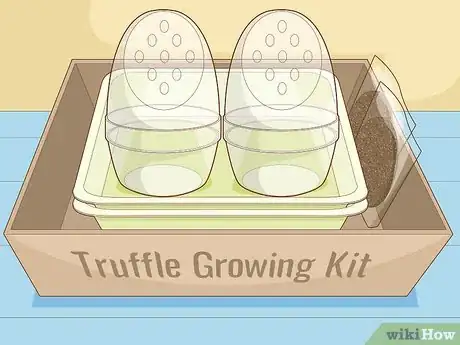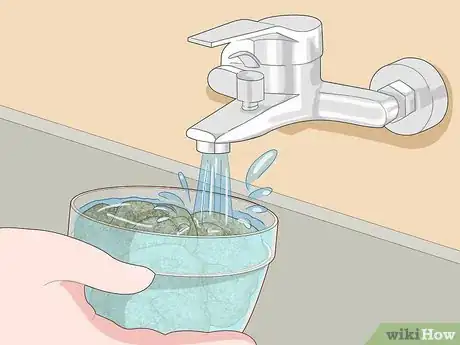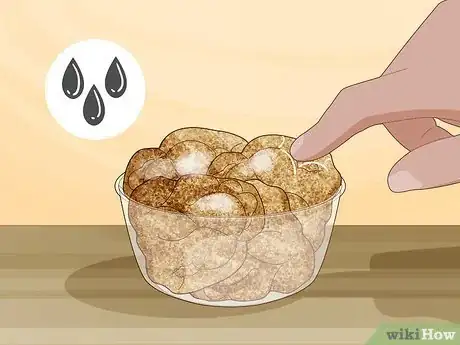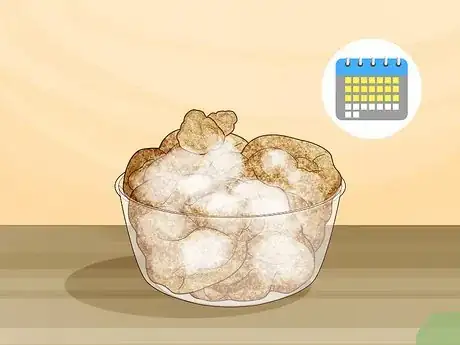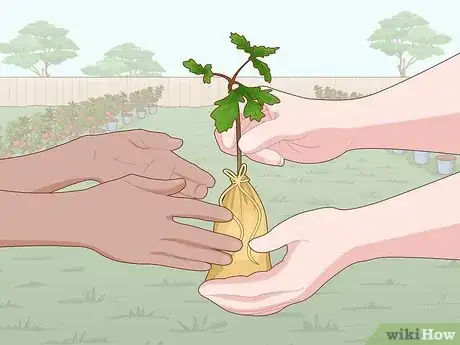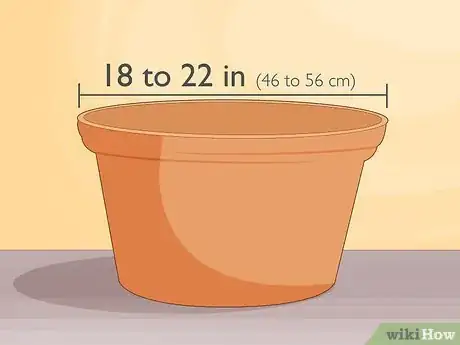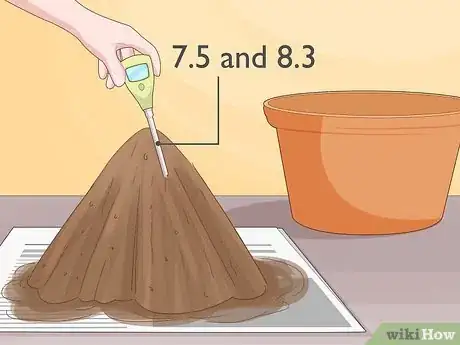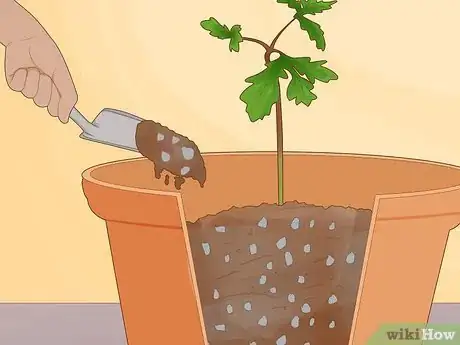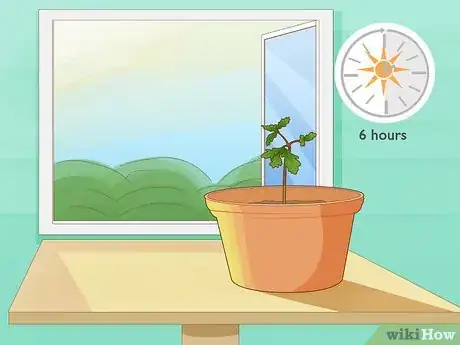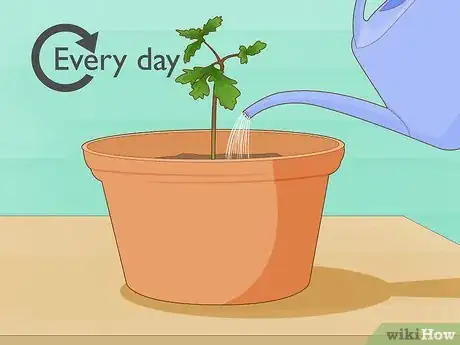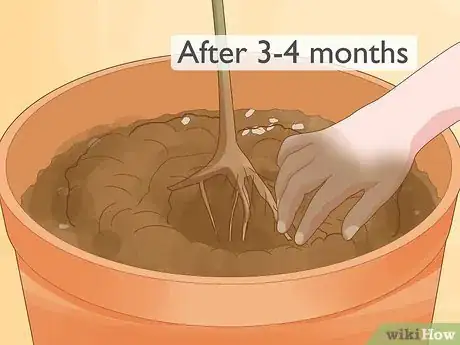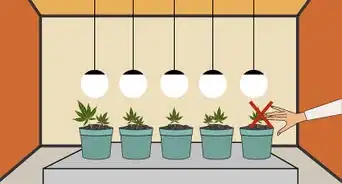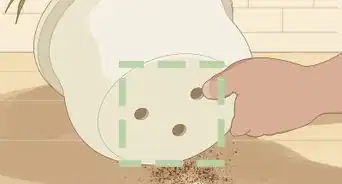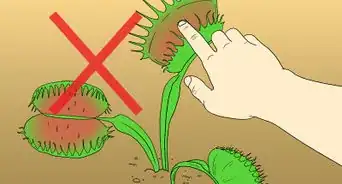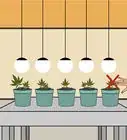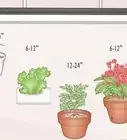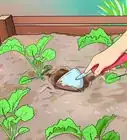This article was co-authored by wikiHow staff writer, Danielle Blinka, MA, MPA. Danielle Blinka is a Writer, Editor, Podcaster, Improv Performer, and Artist currently living in Houston, TX. She also has experience teaching English and writing to others. Danielle holds a Bachelor of Arts in English, Bachelor of Arts in Political Science, Master of Arts in English with a concentration in writing, and Master of Public Administration from Lamar University.
There are 13 references cited in this article, which can be found at the bottom of the page.
This article has been viewed 56,225 times.
Learn more...
Truffles are an expensive delicacy, so you may want to grow truffle mushrooms indoors if you enjoy eating them. In the wild, truffles, which are a fungus, naturally grow at the base of certain trees. It’s difficult to grow truffles indoors, though you may be able to grow black truffles or white truffles indoors. The fastest way to grow them indoors is to use an indoor truffle growing kit. However, you'll get a better, more sustainable crop if you grow them using an inoculated sapling.
Steps
Using an Indoor Truffle Growing Kit
-
1Purchase a kit for growing white or black truffles. Black truffles are typically easier to grow, but white truffles are more valuable since they’re rare. Choose which type of truffle you want to grow, then buy the right kit.[1]
- You can find truffle kits online.
- Check the kit to make sure it’s intended for indoor use. Some kits are designed to be used outdoors on existing trees.
Tip: In some areas, you may be able to purchase a kit for growing magic truffles indoors. These mushrooms have hallucinogenic properties, so they're illegal in most areas outside of the Netherlands.
-
2Inoculate the substrate if your kit isn't pre-inoculated. Add substrate to a sterilized jar, then use a spore syringe to inject the truffle spores into the substrate. Cover and shake the jar to mix the spores into the substrate. Place the jar in a dark place that stays between the temperature of 21 to 25 °C (70 to 77 °F). Wait 2-4 weeks for your spores to colonize in the substrate.[2]
- It's best to shake the container 2-3 times a week to help distribute the spores evenly throughout the substrate.
Advertisement -
3Follow the instructions to set up the kit. Read the instructions that came with your kit. Some kits come with the spores mixed into the substrate, so you just need to add water.[3] If not, add the truffle spores to the substrate by following the instructions that came with your kit. Push the spores about 2-3 mm below the top of the substrate.[4]
Tip: Each kit is different, so the instructions vary. Be sure to follow the instructions that came with your kit, even if they contradict other advice.
-
4Add water to the soil to start your truffle garden. Use a watering can or spray bottle to moisten the soil that contains the truffle spores. This should activate the spores and provide them with the moist environment they need to grow.[5]
- Check the instructions that came with your kit to find out how much water is recommended.
-
5Rinse and shake the substrate if the instructions say to do so. Some kits that come with a premixed substrate require you to rinse the mixture to help activate the truffles. After you add water, cover the container and shake it. Then, turn the container over to drain the water out of the top of the lid. Repeat 2-3 times to ensure that your truffle spores are activated.[6]
- You may not need to rinse your substrate. Always follow the instructions that came with your kit.
-
6Keep the lid on your truffle garden at all times to avoid contamination. Spores from other types of fungi, like mold, can get into the substrate if you leave it exposed. The fungus will compete with the truffles, preventing them to grow. Additionally, it may damage your truffle crop. Secure the lid over your truffle garden to keep it protected.[7]
-
7Place the grow kit in a dark area that's between 21 to 25 °C (70 to 77 °F). Mushrooms don't need light to grow. Since they're a fungus, they grow best in a dark, moist environment. Keep your kit in a pantry, cabinet, or under a towel at room temperature. This will help you grow your crop as quickly as possible.[8]
-
8Moisten the soil before it dries out so the conditions are ideal for growth. Use your fingertip to see if the soil feels moist. If it's starting to dry out, use a spray bottle add more water to the grow kit. However, don't add any water if the soil feels wet.[9]
- Spritz the entire surface of the substrate with water when you're doing a watering.
-
9Expect your truffles to grow in about 2-3 weeks. Truffle kits grow much faster than truffles grow in the wild. Check on your truffles daily to monitor their progress. You'll likely see growth after 1-2 weeks, and your mushrooms should be ready to harvest after 2-3 weeks.[10]
- Some kits promise a faster crop, so check the instructions that came with your kit. Typically, the kits that grow faster only produce 1 small crop.
Growing an Inoculated Sapling
-
1Purchase a sapling that’s been inoculated with truffle spores. Truffles naturally grow on tree roots, so the best way to grow them is to use a sapling that’s already infected with truffle spores. Choose a birch or beechnut tree since they’re smaller and easier to grow indoors. Alternatively, grow a hazelnut tree in a small pot so it gets about the size of a bonsai.[11]
- You can find inoculated trees online or through some nurseries.
-
2Choose a planter that's between 18 to 22 in (46 to 56 cm) in diameter. The planter will restrict the root ball's growth, which can keep your tree a manageable size. A large planter will provide your tree with just enough space to get the nutrients it needs so it stays alive, allowing your truffles to grow. Generally, an 18 to 22 in (46 to 56 cm) planter works great for small trees.[12]
- Pick a planter that fits your design preferences since your tree will likely be around for several years before you get a crop.
-
3Test your potting soil to make sure it has a pH between 7.5 and 8.3. Truffles grow best in a soil that is slightly alkaline. Use a soil testing kit to make sure your potting soil is in the correct pH range for growing truffles. Follow the directions on your kit to test the soil.[13]
- If the pH is too low, add limestone to the soil to raise it.
-
4Fill the bottom half of your pot with a 50-50 mixture of soil and gravel. Truffles need moist soil, but they’ll rot if they’re sitting in water. To ensure your soil has great drainage, mix gravel into the potting soil at the bottom of the pot.[14]
- You can find potting soil and gravel at your local gardening store.
-
5Put the sapling in the center of the pot with the roots spread out. Set the root ball of your sapling on top of the soil and gravel mixture. Gently pull on the roots to spread them out over the soil. This will help the tree settle into the planter.[15]
- If necessary, untangle the root ball without bending the roots.
-
6Cover the roots of the sapling with potting soil until the planter is full. Fill the rest of the planter with potting soil. Tap down on the top of the soil to remove any air bubbles, then add more soil until the pot is completely full.[16]
Growing and Harvesting the Truffles
-
1Place the planter in a window that gets at least 6 hours of sun every day. Truffles need full sun, so put the sapling or substrate in a sunny spot. Check that the container gets sun for at least 6 hours a day. Without proper sunlight, your truffles may not grow.[17]
- If you don’t have a window that gets proper sun, move the container between windows to ensure it gets sun.
-
2Keep the room temperature between 21 to 25 °C (70 to 77 °F). Set your thermostat to maintain the proper room temperature. Alternatively, use a heat lamp to warm the soil and encourage the truffles to produce a crop.[18]
- In the wild, truffles grow well in areas that have all 4 seasons, so you can still grow truffles in a room that has varying temperatures. However, it can take years for the truffles to grow under natural conditions. They may grow faster if you keep the soil warm.
-
3Water the soil every day to keep the it moist. Like other fungi, truffles thrive in a moist, well-draining soil. Use a watering can or cup to moisten the surface of the soil, whether you’re growing a tree or using a kit.[19]
- Check your drainage pan after each watering. If it contains water, empty it out in a sink.
-
4Begin checking the soil for truffles after 3-4 months. You likely won’t get any truffles for at least a year. However, some kits may sprout truffles in as little as 3 months, so it’s okay to start looking for them at this time.[20]
- If you used a kit, read the instructions to see how long it takes for the truffles to grow.
Tip: It may take 4-5 years for truffles to start growing at the base of your tree, so be patient.[21]
-
5Check for lumps growing below the soil. Press your finger into the soil to feel for lumps. Look for black lumps if you're growing black lumps or white lumps if you're growing white truffles. Since truffles usually grow on tree roots, they’ll likely be under the surface of the soil.[22]
- If you don’t see any lumps, the truffles aren't producing a crop yet.
-
6Pull the truffles from the soil when they're slightly wet or spongy. When you find truffles, use your hand to pick them out of the soil. Collect the truffles in a separate container for use later. The truffles should leave spores in the soil for the next crop.[23]
- Wash your truffles before cooking with them.
- If the truffles are wet and very spongy, they're likely rotting and aren't fit for consumption.
- You'll likely get multiple crops of truffles, as they'll leave behind spores. However, some kits only produce 1 crop, so read the instructions that came with your kit.
Warnings
- While you can grow magic truffles indoors using the same techniques, keep in mind that they are illegal everywhere but the Netherlands. However, you may be able to buy an indoor truffle growing kit for magic truffles if you live in Europe. These are sold online.⧼thumbs_response⧽
References
- ↑ http://sfp.ucdavis.edu/pubs/SFNews/archives/93071/
- ↑ https://mushplanet.com/cultivation-techniques/growing-truffles-philosopher-stones/
- ↑ https://www.youtube.com/watch?v=crqK89Y4IHI&feature=youtu.be&t=22
- ↑ http://sfp.ucdavis.edu/pubs/SFNews/archives/93071/
- ↑ http://sfp.ucdavis.edu/pubs/SFNews/archives/93071/
- ↑ https://www.youtube.com/watch?v=crqK89Y4IHI&feature=youtu.be&t=32
- ↑ https://mushplanet.com/cultivation-techniques/growing-truffles-philosopher-stones/
- ↑ https://mushplanet.com/cultivation-techniques/growing-truffles-philosopher-stones/
- ↑ https://mushplanet.com/cultivation-techniques/growing-truffles-philosopher-stones/
- ↑ https://mushplanet.com/cultivation-techniques/growing-truffles-philosopher-stones/
- ↑ https://www.youtube.com/watch?v=UlpQGExn4pw&feature=youtu.be&t=16
- ↑ https://www.rhs.org.uk/advice/grow-your-own/fruit/pears
- ↑ https://www.researchgate.net/publication/318154138_Soil_pH_and_mineral_nutrients_strongly_influence_truffles_and_other_ectomycorrhizal_fungi_associated_with_commercial_pecans_Carya_illinoinensis
- ↑ https://www.agric.wa.gov.au/new-horticulture-crops/cultivation-black-truffles-western-australia?page=0%2C1
- ↑ https://www.rhs.org.uk/advice/grow-your-own/fruit/pears
- ↑ https://www.youtube.com/watch?v=UlpQGExn4pw&feature=youtu.be&t=22
- ↑ https://www.bhg.com/gardening/how-to-garden/what-is-considered-full-sun/
- ↑ https://mushplanet.com/cultivation-techniques/growing-truffles-philosopher-stones/
- ↑ http://theveggielady.com/how-to-grow-truffles/
- ↑ http://theveggielady.com/how-to-grow-truffles/
- ↑ https://trufflegrowers.com.au/growing-truffles/
- ↑ https://trufflegrowers.com.au/growing-truffles/
- ↑ https://www.knowyourforest.org/sites/default/files/documents/Oregon_Native_Truffles.pdf
